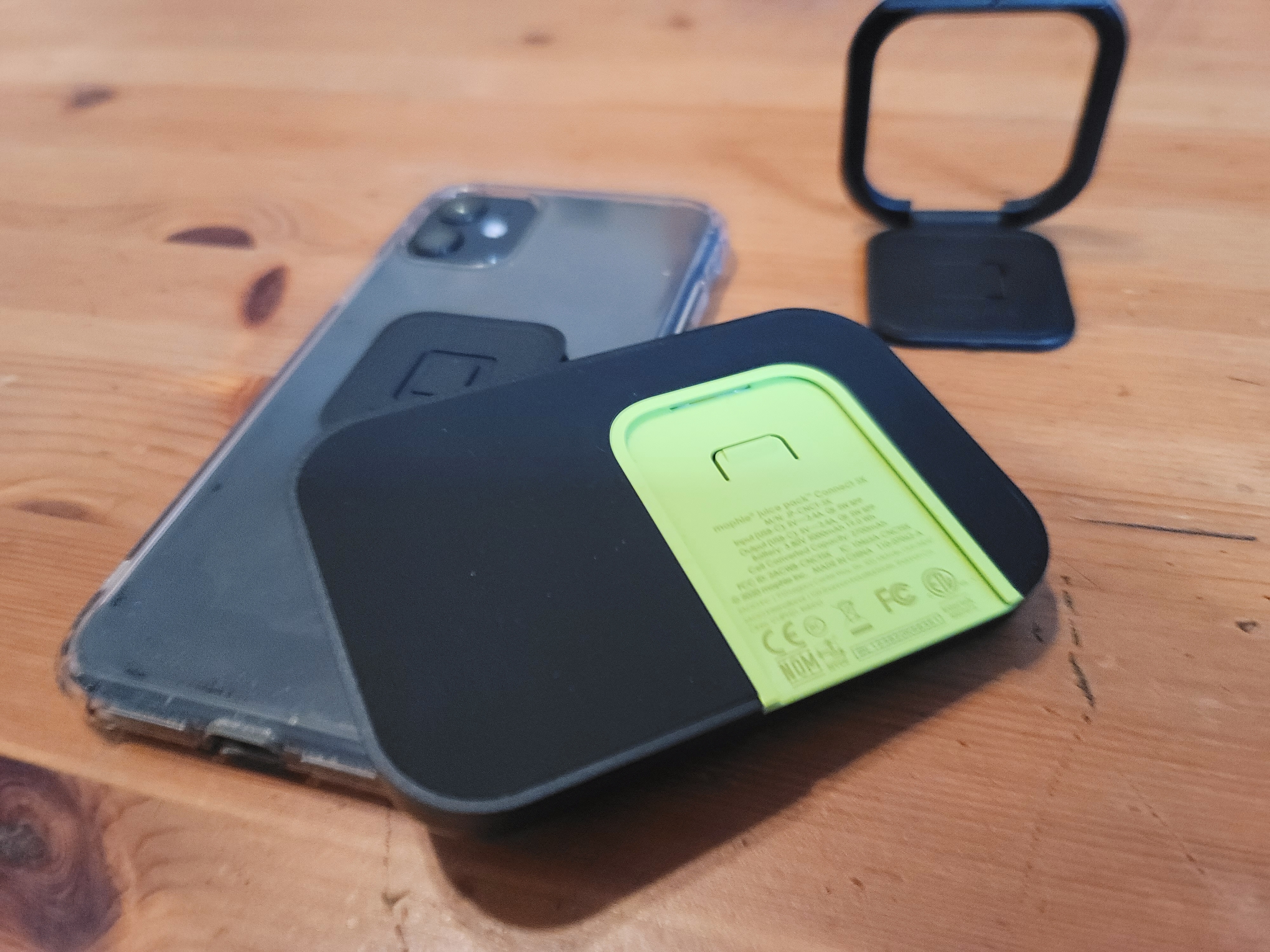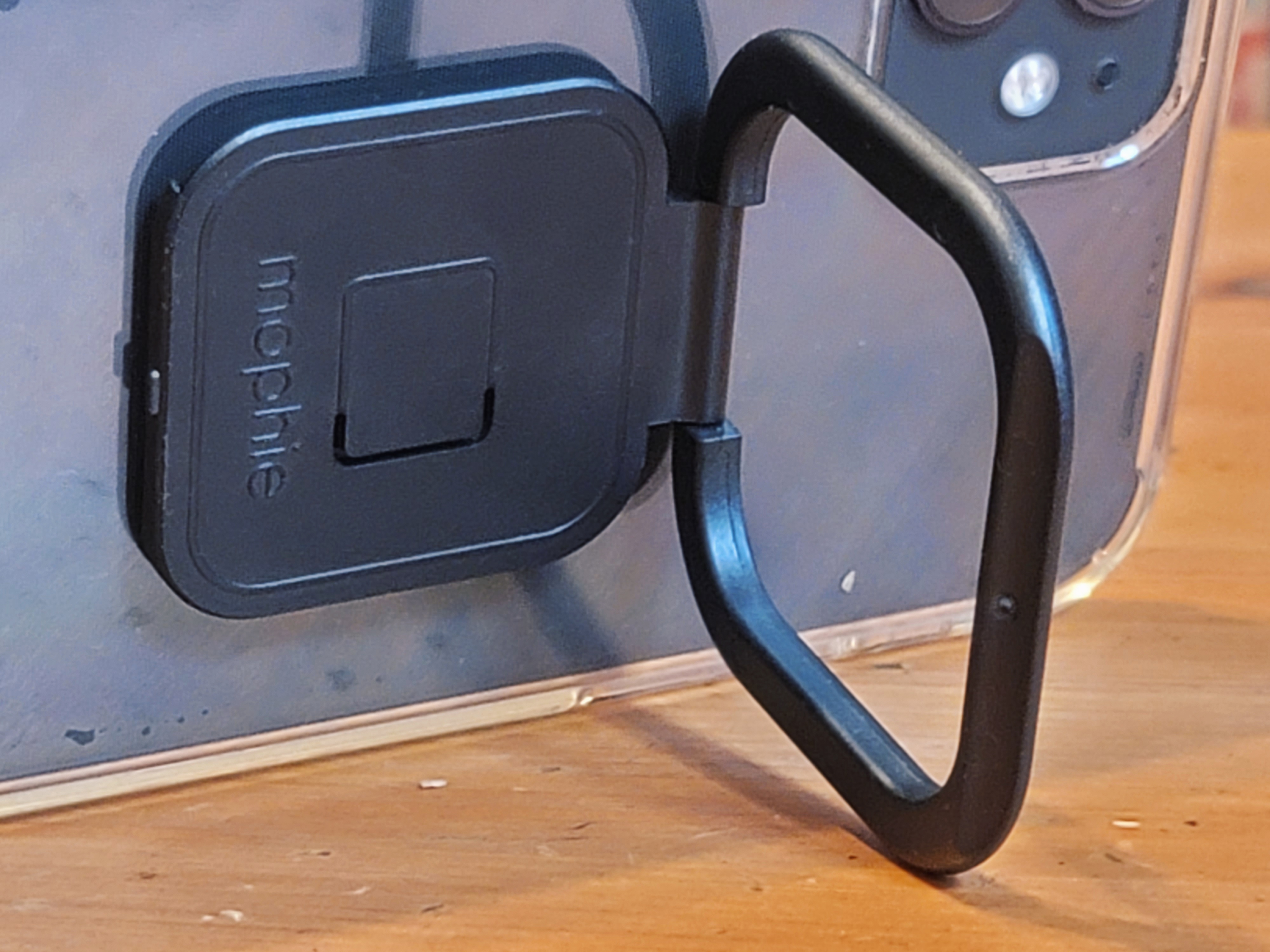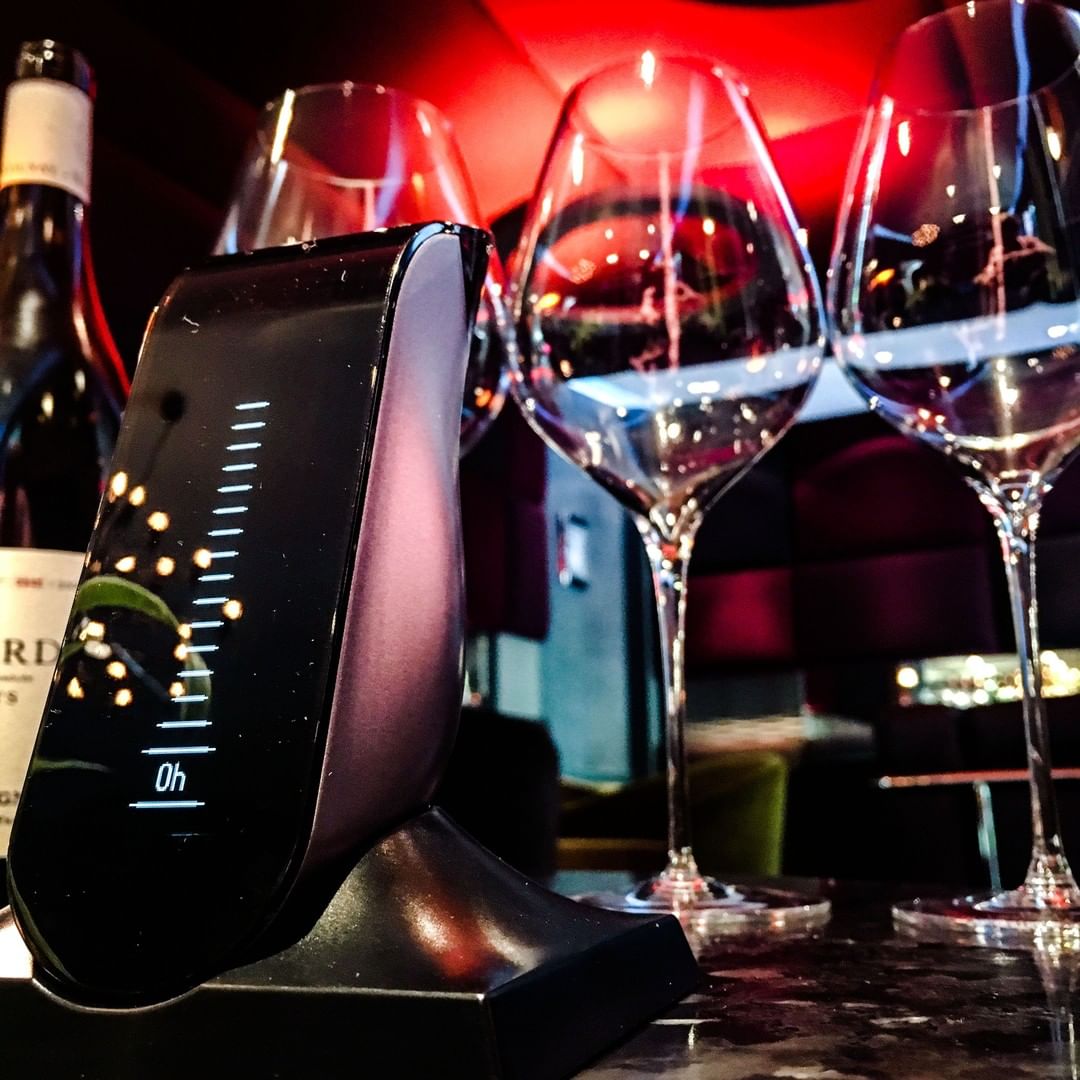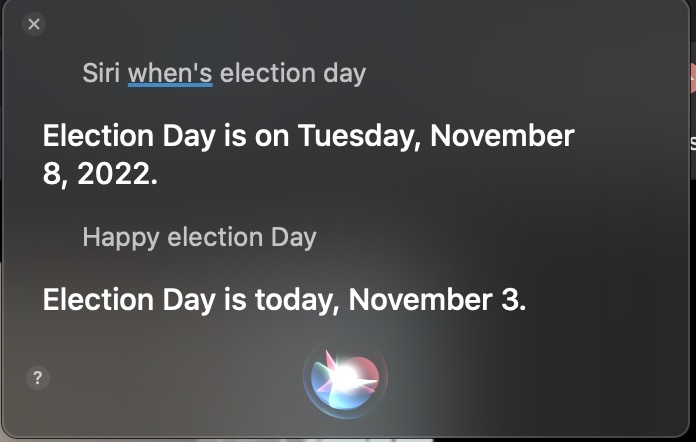There was some confusion when the Juice Pack Connect was announced last week. I admit I was a bit confused, too. It was, no doubt, the proximity to Apple’s iPhone 12 launch that lead many to (understandably) assume that the new take on Mophie’s case is based on the handset’s new MagSafe tech.
While it seems likely that some future version of the accessory will sport that functionality, truth is there are two primary technologies at the heart of the newer, more modular battery pack: wireless charging and good old-fashioned adhesive. That means, among other things, that the system effectively works with any handset that supports Qi wireless charging.
In fact, the system is actually pretty bare bones by design. There’s not even a case included in the box. You’ve got to supply your own. Instead, the system ships with the battery pack, a grip/stand and, helpfully, two adapters. That last bit is nice in case you need a do-over or plan sharing the battery with someone else.

Image Credits: Brian Heater
Installation is pretty simple. There’s even a little cardboard guide to insure you center it properly, à la the sort of frame you’d get to install a screen protector. You can install it directly onto the back of the phone, as well, but I prefer to stay noncommittal with my accessories if possible. That said, you’ll need to live with the little adapter nub on the rear of your device when other accessories aren’t attached.
The accessories slide onto the anchor from the side. The battery pack is easily the nicest-looking part of the whole rig — and the one that most closely retains the design language of the original Juice Packs. The ring/stand is a bit cheaper-feeling and feels like a bit of an afterthought to occupy the system when not charging. One of the big trade-offs is that the more compact battery design means a smaller capacity; 5,000mAh isn’t bad, but you can find a higher capacity case for cheaper.

Image Credits: Brian Heater
The other trade-off you probably already know, which is that wireless charging is slower than the wired kind. For that reason, the system is better adapted to keeping your device alive for long stretches, rather than fast charging. That said, if you’re really in a pinch and have the right cables handy, you can charge your phone up faster via the USB-C port (which is also used to top off the battery).
The Connect Stand is serviceable. It serves better as a stand than a grip. It would be useful if the company offered something more like a Pop Socket for a more solid grip. That’s the nice thing about modularity, though — they can always add more accessories. At $80, it’s not cheap, but, then Mophie products never really are.
from Apple – TechCrunch https://ift.tt/3mL6HF0




